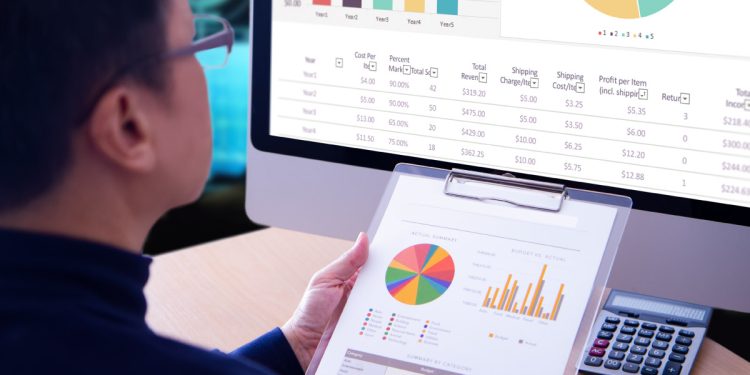Data analysis is a key function in any productive business. Reports generated provide vital business insights that guide profitability and the efficiency of the systems in place.
However, data reporting remains a challenge for some produce businesses that have been collecting data manually for several years.?
If this sounds like your business, you can simply produce data reporting by implementing software like Silo. The right produce management software will streamline all operations, which will ease the retrieval of critical reports and other critical information.
Read on to learn about the best practices that will simplify data reporting for your produce business.
Table of Contents
1. Define your data needs
Defining your data needs is an excellent way to produce data reporting simply. An efficient data reporting method identifies the stakeholders and their needs before data retrieval. For instance, you may be dealing with the produce suppliers, internal departments, retailers, wholesalers, and consumers in the produce business.
Once you identify the data needs of each stakeholder, then data reporting becomes a seamless process. You can retrieve specific data that the marketing department needs, such as consumer analytics. This saves lots of resources that can be channeled to other business sectors.
Defining data needs also helps entities to focus on improving data governance. For instance, they can prioritize only the critical data collection techniques, set up the data collection policies, and identify the best data storage techniques.
2. Automate major processes
Automating key produce processes will deliver immeasurable value to your produce business. The time saved from manual data entry and warehouse produce counting can be channeled to more productive areas.
When used correctly, produce software will enable you to increase efficiency by standardizing and streamlining areas that will contribute to the growth of your business.
3. Get a simplified produce data reporting software
Financial reporting software is vital for both small and large produce businesses. However, complex systems can deter seasoned produce business owners from making the switch. While the first step is getting easy to understand and use software, you can simplify the software further.
For instance, some companies that use complex data reporting software build user-friendly templates that can be accessed at any time. This ensures easy sharing of data among different departments.
You can also simplify your produce data reporting software by updating data in real-time, creating key performance indicators, and using live text or visually appealing features to complement data tables.
4. Use real-time information
Failing to locate the latest data is one of the things that hinder efficient data reporting. Produce businesses can increase data reporting efficiency by updating information in real-time.
It would be paramount to task every staff member to update data throughout the day. This ensures the accuracy of insights from the data collected.
5. Organize your data
You may have very resourceful data stored. However, disorganized data is only a disservice to the business. You need to develop procedures that will enable the retrieval of transactional data from various sources, remove redundant information and categorize it.
Organized data is understandable and navigable. And a streamlined approach maximizes the impact of data reporting.
6. Integrate business processes
Integrating the separate systems simplifies the data reporting process if you have different platforms for your produce business. For instance, if you have other software for warehouse management, supplier management, and sales, integrating them will allow you to streamline most of the operations in your business, including data reporting.
Go for flexible and scalable software options that will allow you to monitor all aspects of the business from a single platform.
7. Use visual data
Visual data is not only a straightforward method to report information but is also easy to understand.
Visual data simplifies produce data reporting by highlighting the important areas with self-explanatory statics. This makes reports seem cleaner, understandable, and more engaging. Reports that have visual data elements are also more appealing to the eye. (Alprazolam)
8. Define your type of data report
Produce data reporting can be based on the type of data an entity wants to report. And these can affect the data reporting methodology and the data outlook. For instance, analytical data cannot have the same outlook as a justification, KPI, or periodic report. Defining the type of data that you want will help you set parameters to be used.
9. Maintain an inventory of produce reports
Maintaining an inventory of produce reports simplifies recurrent data reporting. Teams are aware of the reports they need to produce within a given timeframe. Data reports inventory also ensures that the report creation journey is constantly polished. The relevant parties will get accustomed to generating reports when needed without much hassle. This ensures continuity of information which is a great way to track your business journey.
What is the importance of produce data reporting?
Make informed business decisions
Data reporting ensures that business owners make informed decisions based on evidence. For instance, produce businesses that want to expand should look at factual figures and growth projections over the past year.
Spot inefficiencies in the business
Your produce business may be booming. And you may not be wary of the pertinent issues in the supply chain. Data reporting enables businesses to catch the problems before they arise. If a significant problem is noted in a particular area, the data will determine how bad the situation is.
Find solutions to problems
Data reporting is pivotal in helping organizations determine the solutions to the issues they face. It allows workers to visualize the relationship between departments, business locations, and systems.??
?

